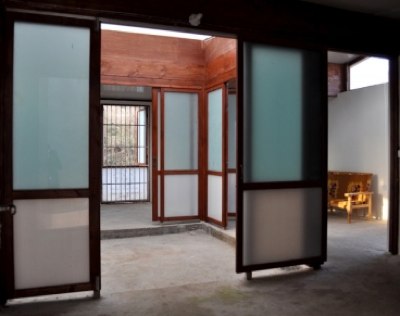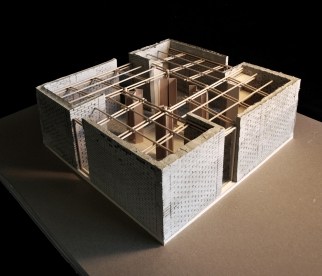 Home prices in many of the world’s most famous cities run to well over $1,000 per square foot. By contrast, MIT architects have produced the first prototype from the Institute’s “1K House” project, an effort to see if low-cost homes for the poor can be constructed for $1,000, total.
Home prices in many of the world’s most famous cities run to well over $1,000 per square foot. By contrast, MIT architects have produced the first prototype from the Institute’s “1K House” project, an effort to see if low-cost homes for the poor can be constructed for $1,000, total.
The project’s debut effort, called the Pinwheel House, was constructed in Sichuan Province, China, at the epicenter of the 2008 earthquake.
Designer Ying chee Chui, a graduate of MIT’s Department of Architecture, created the housing especially for areas prone to natural disasters. Chui incorporated hollow brick walls with steel bars for reinforcement and wooden box beams to withstand earthquakes up to 8.0 in magnitude. The home turned out bigger and more costly, but at $5,925, it is still very inexpensive in relative terms.
The idea to attempt building $1,000 homes was first inspired by One Laptop Per Child, the foundation headed by MIT professor Nicholas Negroponte that brings low-cost computers to children.
The Pinwheel House is one of 13 plans that emerged from the first 1K House design studio in 2009. The prototype was more expensive to build partly because it is larger than Chui’s original design — about 800 square feet, rather than 500 square feet. The smaller version of the house could be built for about $4,000, says Chui, now an architectural practitioner in New York City. That figure could be still lower if a large number of the homes were built at once, she adds.
In any case, the central design concept of Pinwheel House is the same: It has a modular layout, with rectangular room units surrounding a central courtyard space. “The module can be duplicated and rotated, and then it becomes a house,” Chui says. “The construction is easy enough, because if you know how to build a single module, you can build the whole house.”
From $1K to $10K
 The 1K House project has proven successful enough, that Chang is overseeing a related MIT design studio this fall, along with a number of outside collaborators. This one aims to create a series of home designs, intended for Japan, which would cost $10,000 to build. Participants in the studio include architects and designers from Tokyo University, the Japanese architecture firm Tsushima Design Studio, Atelier FCJZ, the Japanese retailer Muji, and Vanke, a real estate development firm in China.
The 1K House project has proven successful enough, that Chang is overseeing a related MIT design studio this fall, along with a number of outside collaborators. This one aims to create a series of home designs, intended for Japan, which would cost $10,000 to build. Participants in the studio include architects and designers from Tokyo University, the Japanese architecture firm Tsushima Design Studio, Atelier FCJZ, the Japanese retailer Muji, and Vanke, a real estate development firm in China.
The new design studio also aims to create homes that could be built inexpensively following natural disasters, such as the earthquake and tsunami that struck northern Japan in March. Rebuilding in such situations, says Yung Ho Chang, a professor of architectural design at MIT, often entails three stages of construction: the creation of temporary shelters, then stronger temporary homes sturdy enough for winter weather, and then permanent replacements for damaged or destroyed buildings.
During that process, Chang says, “there are a lot of resources wasted, including energy.” Alternately, he suggests, inexpensive and simple houses built from an existing template could let countries rebuild more quickly with practical, permanent structures.
Instead of cheap housing types with short lifespans made with low quality standards, the MIT house project uses new technologies and processes for the quick creation of housing equal to or higher then the typical quality standards which are currently seen.



















